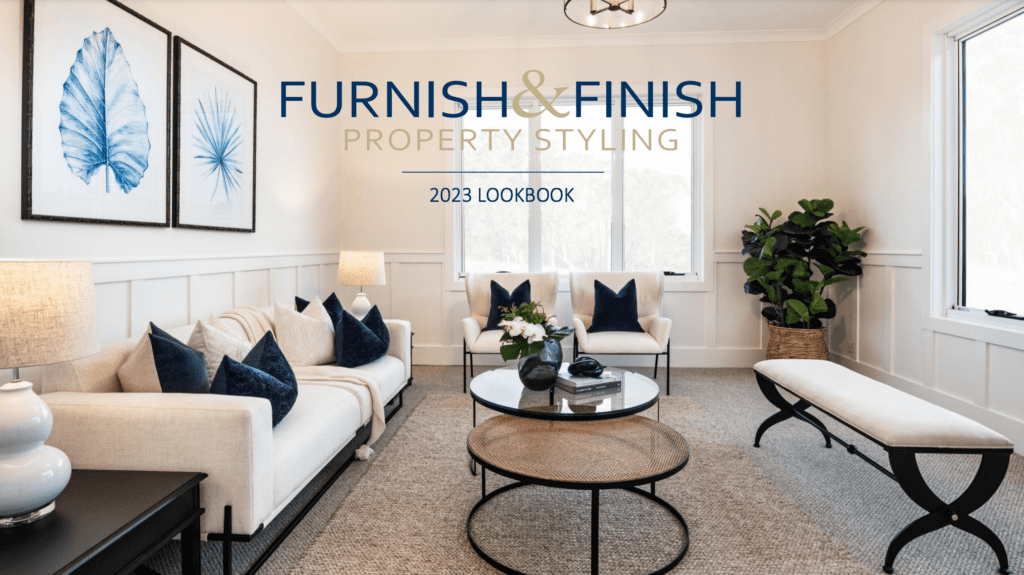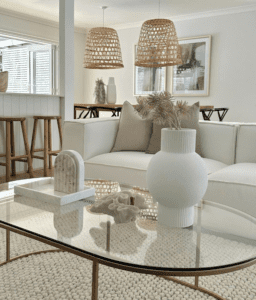The impact of colour on human emotions and decision-making can be incredibly powerful, and in the world of property styling, understanding and utilising colour psychology is essential to create an environment that appeals to potential buyers. Both subtle and bold colour choices can evoke certain emotional responses that can potentially influence a buyer’s perception of your Sydney property. By strategically applying colour psychology principles to your property styling efforts, you can amplify your home’s aesthetic appeal and boost its desirability in the competitive Sydney real estate market.
This in-depth educational article will explore the fascinating world of colour psychology and its role in property styling. Furnish & Finish will provide insights into how various colours can affect emotions, buyer preferences, and decision-making processes. We’ll discuss techniques for incorporating impactful colour choices in your property styling, focusing on creating a cohesive and inviting environment that effectively resonates with your target audience.
By understanding the powerful influence that colour plays in property styling, you will be equipped to make well-informed choices that enhance your home’s aesthetic appeal, capture the hearts of potential buyers, and ultimately contribute to a successful sale in the Sydney market.
The Impact of Colour Psychology on Property Styling and Buyer Perceptions
1. Understanding Colour Psychology: The Basics
Colour psychology is the study of how colours can influence human emotions, perceptions, and actions. Each hue evokes unique feelings and associations, stemming from both biological and cultural factors. When it comes to property styling, incorporating the right colours can create a strong emotional connection with potential buyers, influencing their perception of a space and, ultimately, their overall impression of a property.
A thoughtful and strategic approach to colour selection is critical for property stylists seeking to evoke specific emotions, create a cohesive design, and appeal to a wide range of potential buyers in the Sydney market.
2. Colour Choices: Evoking Emotions and Guiding Perceptions
When selecting colours for your property styling, consider the emotional responses and psychological associations each hue may elicit. Below are some common colours and their associated emotions:
– Blue: Often associated with calmness, stability, and serenity, blue can evoke feelings of relaxation, making it a popular choice for bedrooms and bathrooms. Lighter shades create a sense of spaciousness, while darker blues can add an element of sophistication and luxury.
– Green: Representing nature and growth, green is linked to feelings of balance, rejuvenation, and harmony. Lighter greens work well in living areas and bedrooms for a soothing, calming effect, while bolder greens can bring a sense of energy to accent walls or statement furniture pieces.
– Yellow: A warm, optimistic colour, yellow communicates joy, happiness, and energy. Brighter shades are perfect for creating a welcoming, uplifting environment in entryways and kitchens, while softer, pale yellows can enhance natural light in living spaces.
– Red: Evoking passion, excitement, and intensity, red is a bold colour choice best used in moderation. Strategic pops of red in accessories or artwork can bring warmth and depth to a room without overwhelming the space.
– Neutrals (white, grey, beige): Neutral hues create a versatile and timeless foundation for a range of design styles. They provide a sense of calm and stability and are ideal for creating a spacious, light-filled environment that appeals to a broad range of buyers.
3. Harmonising Colours: Creating a Cohesive and Inviting Environment
For a successful property styling, it’s essential to harmonise colours across your property, creating a sense of flow and cohesion. This doesn’t mean using one colour throughout, but rather utilising a consistent colour palette that blends seamlessly from room to room.
One approach is to choose a base neutral, such as white or grey, as your primary wall colour and then add complementary hues in furniture, soft furnishings, and accessories to create visual interest and depth. Consider employing the ’60-30-10 rule’: 60% of your space should feature the dominant colour, 30% a secondary colour, and 10% an accent colour, ensuring balance and harmony throughout.
4. Considering Your Target Market: Meeting Buyer Expectations
Your choice of colours should not only evoke specific emotions but also align with the expectations of your target market. Consider the demographics of potential buyers in your Sydney property’s area, and factor in factors such as lifestyle, cultural background, and personal taste.
For example, if your primary target market is young professionals, opt for a sophisticated, modern colour palette with bold accents and on-trend hues. Conversely, if you’re catering to families, choose warm, inviting colours that create a sense of comfort and stability.
Conclusion:
Leveraging colour psychology in property styling significantly influences buyer perceptions, emotions, and decision-making processes, ultimately contributing to your property’s success in the Sydney market. By understanding and implementing these principles, you will be better equipped to create a captivating, emotionally resonant environment, and capture the hearts of potential buyers.
Trust Furnish & Finish to expertly apply colour psychology principles to your property styling, ensuring a harmonious, evocative space that appeals to your target audience and maximises your property’s sales potential. Get in touch with our expert team today to discover how we can transform your Sydney property into a desirable, colour-infused haven in the competitive property market.






No Comments
Sorry, the comment form is closed at this time.